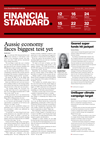Pendal, Regnan funds expand controversial weapons exclusionsBY JAMIE WILLIAMSON | MONDAY, 7 JUL 2025 6:30PMPendal has updated the exclusions for three sustainable funds, evolving its stance on controversial weapons. The Pendal Sustainable International Share Fund, Pendal Sustainable Conservative Fund, and the Regnan Global Equity Impact Solutions Fund now exclude companies directly involved in the supply of goods or services specifically related to controversial weapons. For the Sustainable Conservative Fund, the exclusion applies to International shares, Australian fixed interest and part of its Alternative investments allocations. The funds already exclude companies involved in the manufacturing of controversial weapons, and companies that derive 10% or more of revenues from manufacturing non-controversial weapons or armaments. "In our view, this change ensures that the fund remains true to label and is more closely aligned with investor expectations in relation to responsible investment funds," Pendal said. The change was effective June 30 and adds to the list of exclusions already in place, including tobacco production and extraction or exploration for fossil fuels. The funds also don't invest in companies that derive 10% or more of revenues from things like the production of alcoholic beverages, pornography, or uranium mining in support of nuclear power. However, companies with a climate transition plan may be exempted from some of the screens. Further, Pendal clarified that in the case of the Regnan fund, it does consider white phosphorous weapons to be controversial weapons. White phosphorous is used in smoke, illumination, and incendiary munitions, with the white phosphorous ignited by contact with air; according to the World Health Organisation, it is harmful to humans by all means of exposure and can burn all the way through to the skin. Human Rights Watch and Amnesty International have both claimed Israeli forces have used white phosphorous weapons in Gaza and along Lebanon's southern border. It's also previously been used by US forces in Iraq and in Afghanistan, and was used to varying degrees by several armed forces in the First World War. |

The head of the United Nations Joint Staff Pension Fund is taking on a new role at Northern Trust Asset Management.
Pablo Berrutti, senior portfolio specialist at Stewart Investors, discusses emerging market investment opportunities and their main growth drivers.
Latest modelling from Emmi indicates carbon emissions may plateau within the next two years before gradually declining, signalling the first ever emission stabilisation outside of an economic crisis.
The likes of Sally Field, Mark Ruffalo and Jane Fonda are calling on the SAG-Producers Pension Plan to dump its holdings in oil and gas companies.
















